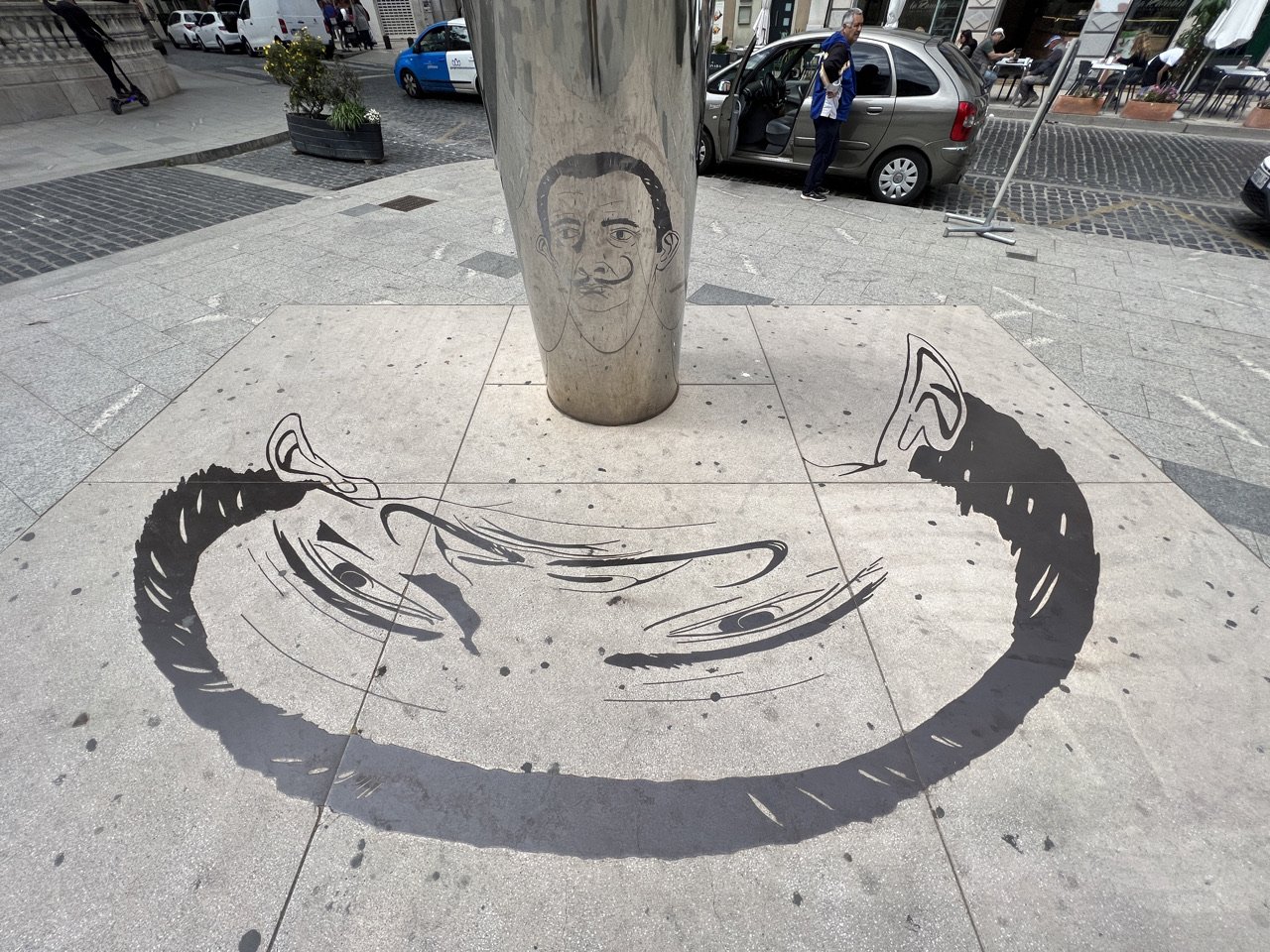Day 569 Figueres, Spain
Salvador Dali’s Backyard
Our extra day in Salvador Dali’s backyard allows Cyn and I to do some work. Cyn even squeezes in some yoga. We had planned to meet with Gaetan and Perrine the young French engineers, who saved us in Patagonia when our car broke down but now we have to postpone. We agree to meet two days later, which then allowed us to properly prep for our alternate route into France and explore the Dali Museum the surrealist painter designed just down the street.
The town is charming. Its streets are slim ribbons of cobbled pavement with intimate and inviting squares, umbrellaed with immense oak trees, that show off the city's long history. The square, called the Rambla became the center of the town. It was once a dry riverbed. The shade trees we walked among were planted in 1864, and in 1877, the railway station, upon which we were forced to debark, was opened.
The town's roots are Visigoth, but it didn't really begin to emerge as a city until it was made a Catalan Royal Town in 1267 and then much later, when the Sant Ferran Castle was built between 1753 to 1766. This made Figueres a supply base for the castle and that grew its population. In 1794 Figueres became part of France, but it bounced back to Spain in 1795. Then during the Peninsular War it was taken again by the French in 1808 under Napoleon but was recaptured by the Spaniards in 1811, and then shuffled again into France the same year, before finally becoming part of Spain for good. The city lies right on the border of the two nations, and explains why parts of three languages are spoken freely - Catalan, Spanish and French.
The town suffered through more mayhem during the Spanish Civil War, where it was the last holdout of the Republican regime before Franco's forces won in 1939. For its loyalty to the Republican government, Figueres was repeatedly bombed and many of its iconic buildings were destroyed or damaged, including the theatre where a young Salvador Dali's paintings were shown and where later the painter rebuilt the theatre, turning it into the museum we were about to visit.
Dali's museum is an extraordinary edifice with all of the odd touches you would expect from a surrealist painter, writer and philosopher. (Look closely at the museum building and sculpture in front.) Not only did he design and create the museum, he is buried in its bowels.
The breadth of Dalis' work stunned me. The immensity and grandness of many of his paintings drops your jaw. I'll let the artwork and spectacle speak for itself. (Be sure to expand the images below to see the whole uncrossed version.)
Finally, note the clever memorial to him and his work at the edge of the Rambla, the one that reveals itself in the stainless steel pole as a self-portrait of the man. (See the video.) Perfectly Dalisesque.
The last image is an immense ceiling mural of Dali and his (beloved wife Gala Dali) reaching heavenward even as your perspective looks at them from beneath where they stand.
Recommendations
If you are planning travel to Catalonia, you might want consider some of these recommendations. You can find more recommendations here.










Celler de Ca la Teta was the foundation for what Duran Hotel & Restaurant is today: a family-run hotel is true to its roots. This history, the stories that have accumulated over the years, the visitors and the decorative pieces they’ve given the establishment are what make Duran what it is now: a hotel, a restaurant and a little museum of the history of Figueres.
Duran Hotel & Restaurant is the most emblematic hotel in the area, with a long history and renowned prestige, it is also the perfect choice to enjoy a stay in Figueres: in the old town and shopping area, just steps from important buildings like the Museum Dalí and Museu del Joguet de Catalunya.”